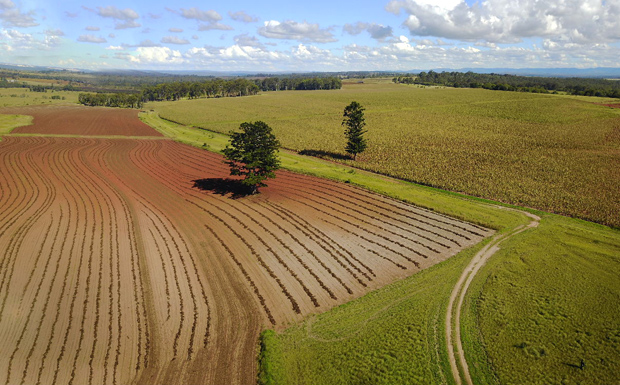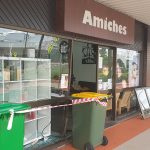
March 14, 2019
A proposed coal mine near Kingaroy would not make economic sense and should be rejected by policymakers on economic grounds, according to a new report.
The report released by The Australia Institute has found the Moreton Resources’ project was unlikely to be economically viable, faced huge barriers in getting the coal to market and would adversely impact key local industries.
“The Kingaroy economy is focused on services and agriculture, and a major coal project would work against existing industries and the local government’s stated plans for the future,” according to Rod Campbell, Research Director at the Institute and co-author of the report.
“While there is a coal-fired power station nearby, it owns its own coal mine and has publicly stated it does not need coal from other mines for ‘many more years’.
“For this new project to get coal to other markets, it would need to build a rail link.
“This could cost $1 billion and also displace recently built tourism infrastructure.”
Mr Campbell said that as renewable energy gets cheaper and coal demand declines, new coal mine proposals became less economic.
“Even projects with the backing of large corporations like Adani and Glencore’s Wandoan mine have stalled,” he said.
“A project proposed by a small company with a history of environmental and tax problems has very little chance of proceeding.
“Policy makers should rule out the project due to the low likelihood of economic benefit, potential environmental and economic risks and the costs associated with ongoing uncertainty for the community.”
The Australia Institute is a think tank based in Canberra.
It conducts research on a broad range of economic, social, transparency and environmental issues.
The Institute is independently funded by donations as well as grants and commissioned research from business, unions and non-government organisations.
- Download: Coal In Kingaroy Briefing Note (899kb PDF)
Related articles:
- Moreton Announces $20m Loss
- Moreton Secures $8.5m Debt Funding
- Moreton Defends Cash Flow Query
- Let Moreton’s Licence Expire: KCCG
- Moreton Weighs Up Sale Of Mine
- Elks Sets Date To Quit As CEO
- Moreton Turns $10,000 Into $13.3m
- KCCG Unveils Coal Rail Maps
- Moreton Delays Release Of EIS
- Protest Group Targets Rail Crossings
- Moreton Says ‘Selective Mining’ Would Extract Cleaner Coal
- Coal Mine Decision ‘By Next Christmas’
- SB Coal Project ‘Well-Advanced’
- Moreton Outlines Plan To Pay Off Tax Debt
- Moreton To Secure Cash Flow
- Taabinga Declared A Coal-Free Community
- Moreton Aims For Coal In 2019
- Moreton ‘Praises’ KCCG Art Project
- Mine Fight Comes Alive With Art
- Moreton Gives Council Coal Mine Update
- Photo Shoot Captures Coal Mine Site
- KCCG Says Moreton Statement Misleading
- Moreton Aims For Rail Corridor
- Moreton Presses On With Mine Plan
- Moreton To Push Ahead With EIS
- Moreton Tax Bill Still In Limbo
- KCCG To Ramp Up Campaign
- Elks’ Role Cut Back Again
- Moreton Appoints Project Manager
- Moreton Starts Mine Approval Process
- KCCG To Make Mine Submission
- Moreton Applies For Mining Licence
- Greens Back Kingaroy Mine Protest
- KCCG Calls For Coal Permit Buyback
- Elks To Resign As Moreton CEO
- Another Step For Moreton Resources
- KCCG Demands Pre-Mining Health Tests
- Crowd Votes Down Mine … Again
- Moreton Faces $8m Tax Bill
- KCCG To Hold Second Anti-Mine Forum
- KCCG Plans Second Forum
- Nannas Take To The Highway
- Kingaroy Coal Mine To Require Federal Approval
- Moreton Looks For Silver Lining
- Between A Rock And Taabinga Village
- Moreton Re-issues Update
- Market Awaits Moreton News
- Moreton Predicts 400-600 Jobs At Mine
- Airport Blocks Cut From Coal Permit
- KCCG Rejects Phone Poll
- Phone Poll Backs Mine: Moreton
- Moreton Takes Mining Plan Out To The People
- KCCG Will Speak To Council
- Nannas Knit Against Mine
- KCCG Meets With State Government
- Coal Mine Fight Spreads
- Moreton Resources Unveils Mine Partner
- Meetings To Discuss Mine
- Moreton Plans To Start Seeking Permits
- Moreton’s Coal ‘Too Expensive’
- Kingaroy Coal Mine? No Way!
- Public Meeting To Discuss Coal Mine
- Stanwell Still Says ‘No’
- Moreton Releases Mine Study Results
- Moreton Resources Eyes Rail Link
- Moreton Buys More Resources
- Mining CEO Talks To Council
- KCCG Sees No Future For Mine
- Green Light For ‘Next Step’
- Moreton Board To Consider ‘Next Step’
- Moreton Resources Splits Off South Burnett Holdings
- Moreton Resources Extends Licence
- Controversial UCG Plant Vanishes
- UCG Plant Starts To Disappear
- Moreton To Begin Mine Concept Study
- Moreton Responds To MP’s Comments
- Moreton Aims To Press On
- Stanwell ‘Rejecting Billions In Savings’
- Stanwell Rules Out Moreton Coal
- ‘Enough Coal For 30-Plus Years’
- Concept Study Next Step For Proposed Coal Mine
- Moreton Triples Coal Estimates
- Coal Mine Review Delayed To July
























I love the Nanango Camera Club photograph that heads this story. Great use of Leading Lines ! The large tree is intriguingly placed. This is an image that encourages exploration by the viewer !
In reality this is old news already known, confirmed ironically by a “think tank” in Canberra having a reputation of being “left leaning”.
It is protecting agriculture in a seat historically only held by the Conservative side of politics.
Despite the LNP MP claiming the LNP would “protect the rich red soils of the South Burnett”, we are at this point because the LNP gave the company renewed licences for five years after the Labor Government halted it and fined it.
The Region NEEDS change or these economics will push for the only proposals put forward to sustain the region moving forward. Rethink time is over. Industry and employment is long overdue, folks.
Mining is not the only way to sustain our region. Every mine comes to an end, as the Meandu miners who’ll all be out of a job by 2030 or 2040 know.
This project – and the company promoting it – are not suitable under any circumstances. The pollution this mine would generate not only in Kingaroy, but all along the transport route to port, is a blight we don’t need.
A better solution would be to get enough irrigation into our region to sustain intensive horticultural industries. They’re clean. Green. Endlessly renewable. And capable of supporting hundreds of full-time jobs.
Yes Rod, you are on the right track. I have been pushing for small scale organic fruit and vege production here in the South Burnett for a long time. It would suit many of our smaller properties (lifestyle blocks), less water needed and there is a ready local market for the produce. Only other thing needed is a decent weekly growers’ market to connect growers to consumers which would also be a plus for tourism. It may also encourage some of our young people to get involved and remain in the district instead of heading off to the city looking for a job.
Those that think agriculture can sustain the region need only look at how agriculture has developed, the numbers of farmers and those employed, to realise the state of decline the industry is in across the region.
Too many rural-based mining critics attempt to push their narrow view of over-importance to the region, ignoring the interests of the vast majority and how to develop the region’s economic base beyond the shortsightedness that has stifled this region’s development for decades.
The mine and the reintroduced rail link represents increased employment $100s of millions in investment and the region’s ability to attract alternative major industries, including manufacturing, beyond the narratives of agricultural base industries that have stagnated for decades and now are in headlong decline.
The South Burnett rates base shows some 18,000 properties with some 1800 of those being farms. Many are reliant on off-farm incomes to remain viable, being little more then hobby farms. With many farmers owning two or more properties, this again reduces the the numbers of farmers and the industry’s ability to generate growth, drive business, and activate employment, forcing down the socioeconomic standard of the region.
Mining and rail are this region’s best chance to reverse this stagnated decline, sparking the changes required to drive this region’s economy forward into the future. Doing nothing but repeating the past is no longer an option for this region.